Abstract
To investigate patterns of endogenous hormone release, we have proposed a biophysical model in which measured hormone concentrations at any given instant reflect the operation of a suitable cumulation function (secretory input) convolved with an appropriate elimination mechanism (metabolic clearance). The cumulation function underlying a macroscopic hormone secretory burst can be represented by a random (Gaussian) distribution of instantaneous molecular secretory rates, which are centered with some finite and determinable standard deviation about a particular moment in time. The hormone elimination mechanism is described by a mono- or biexponential clearance function. The resultant convolution integral is solved by iterative nonlinear least-squares parameter estimation, in which all plasma hormone concentrations and their variances are considered simultaneously. Experiments with human endocrine time series revealed that the spontaneous secretory patterns of any of multiple distinct anterior pituitary hormones (luteinizing hormone, follicle-stimulating hormone, growth hormone, prolactin, thyrotropin, and adrenocorticotropic hormone) can be described effectively by this parsimonious model. In addition, endogenous hormone disappearance rates determined by deconvolution agreed well with those reported earlier that were determined after exogenous hormone injections. Moreover, this model predicted that durations of underlying secretory impulses are extremely brief; i.e., the standard deviations of the Gaussian distributions of instantaneous secretory rates range from 4.5 min (luteinizing hormone) to 16 min (growth hormone) compared to plasma hormone concentration peaks of 90-140 min in duration. Accordingly, we conclude that observed physiological patterns of fluctuating plasma hormone concentrations can be accounted for by distinct, highly delimited, random bursts of hormone release separated by intervals of secretory quiescence.
Full text
PDF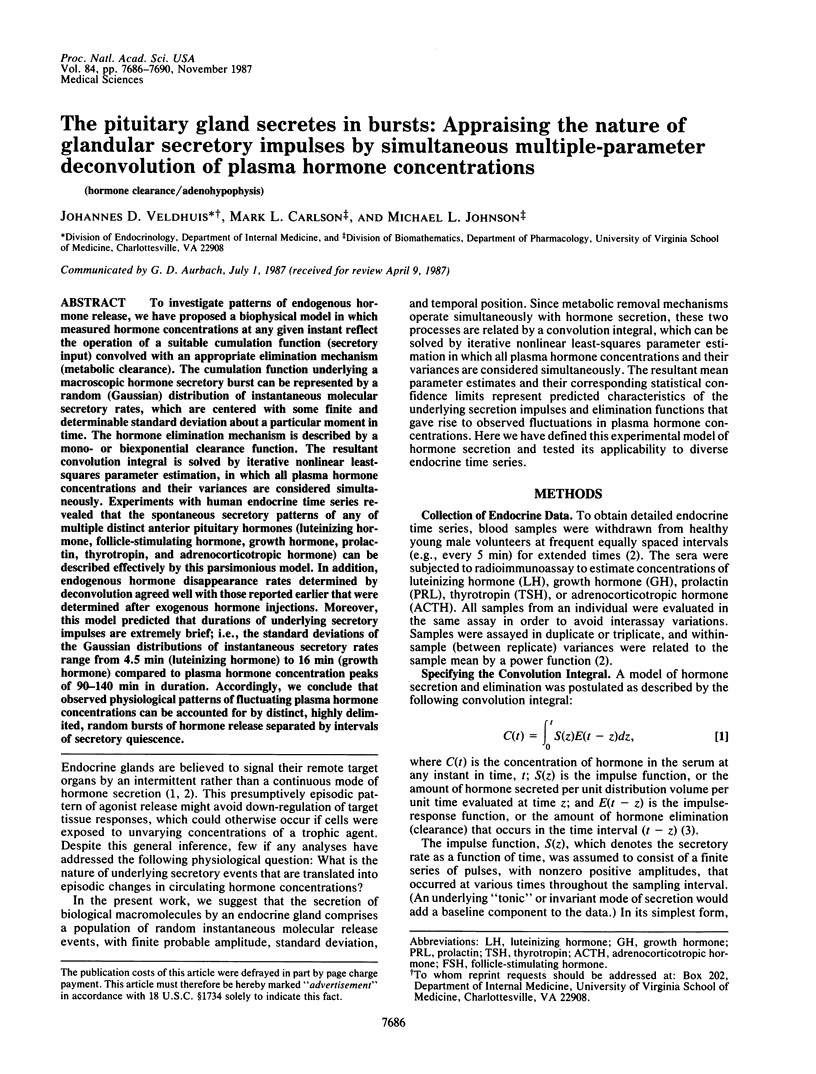
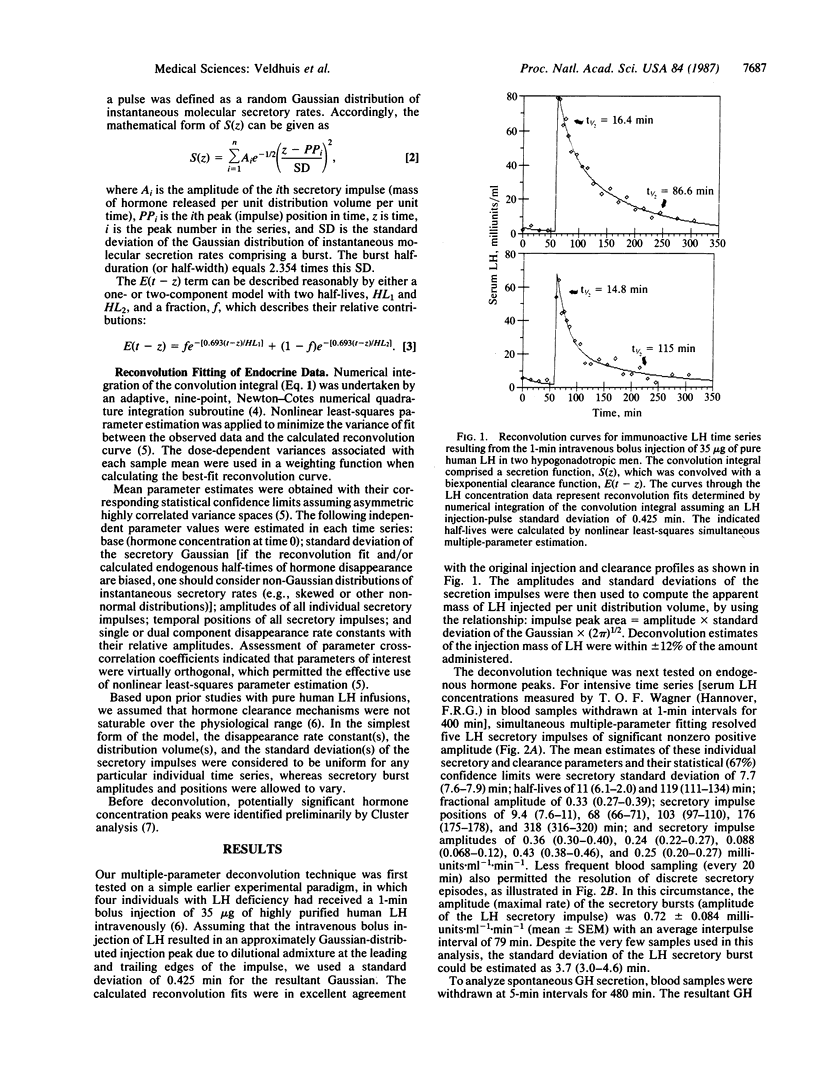
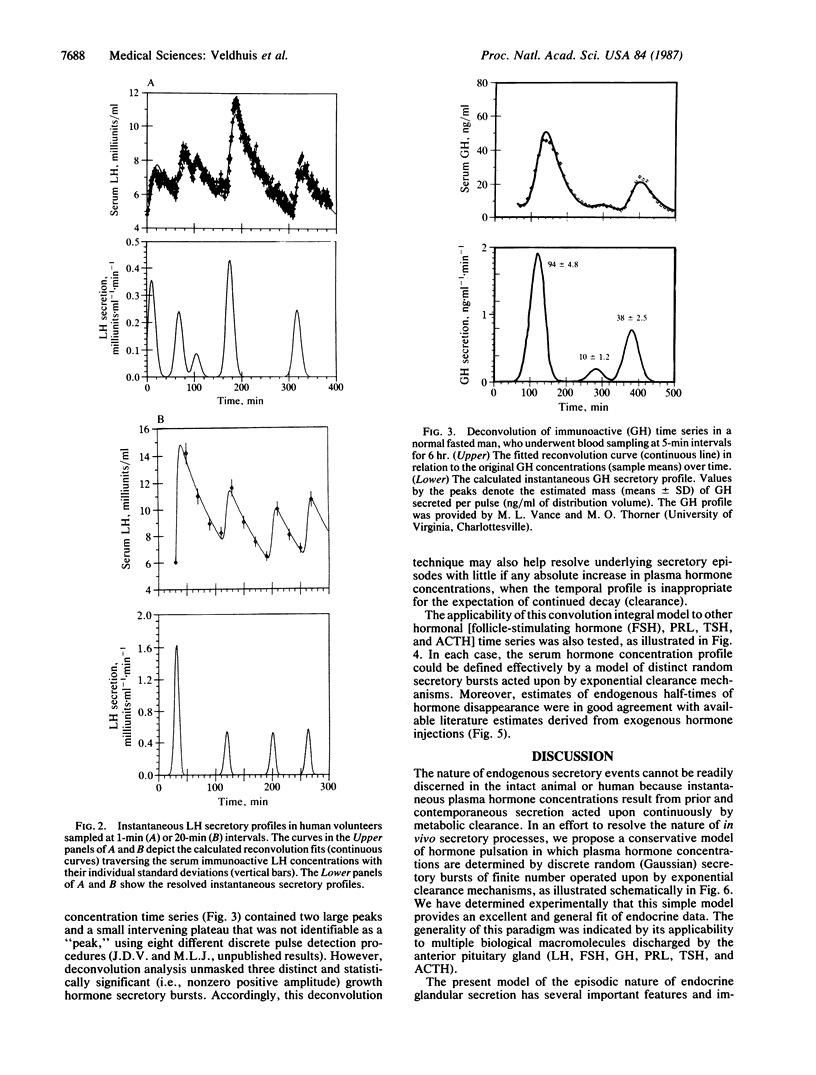
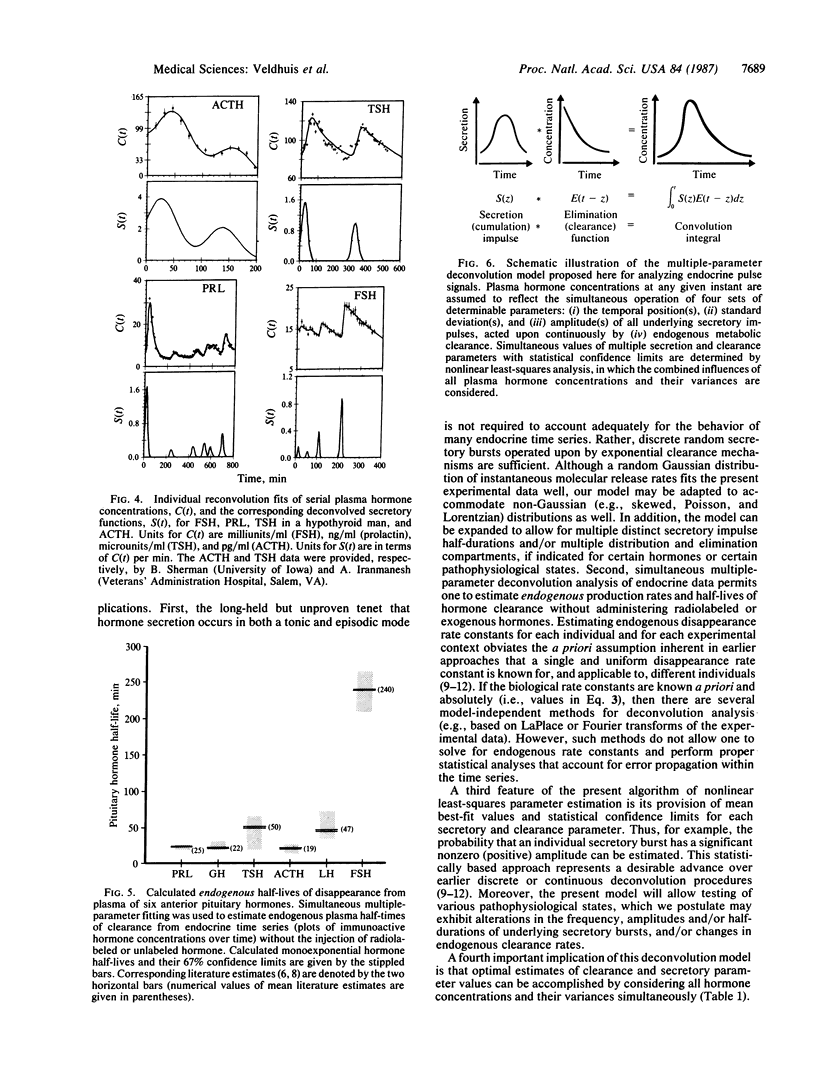
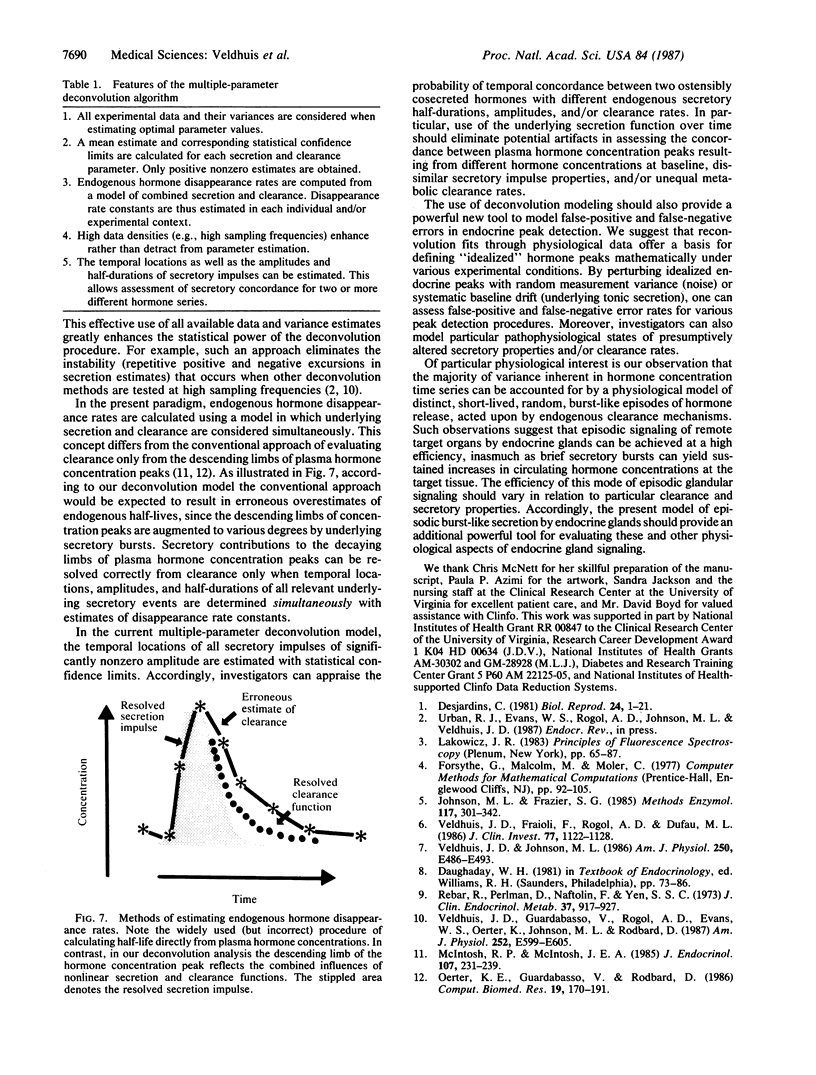
Selected References
These references are in PubMed. This may not be the complete list of references from this article.
- Desjardins C. Endocrine signaling and male reproduction. Biol Reprod. 1981 Feb;24(1):1–21. doi: 10.1095/biolreprod24.1.1. [DOI] [PubMed] [Google Scholar]
- McIntosh R. P., McIntosh J. E. Amplitude of episodic release of LH as a measure of pituitary function analysed from the time-course of hormone levels in the blood: comparison of four menstrual cycles in an individual. J Endocrinol. 1985 Nov;107(2):231–239. doi: 10.1677/joe.0.1070231. [DOI] [PubMed] [Google Scholar]
- Oerter K. E., Guardabasso V., Rodbard D. Detection and characterization of peaks and estimation of instantaneous secretory rate for episodic pulsatile hormone secretion. Comput Biomed Res. 1986 Apr;19(2):170–191. doi: 10.1016/0010-4809(86)90014-5. [DOI] [PubMed] [Google Scholar]
- Rebar R., Perlman D., Naftolin F., Yen S. S. The estimation of pituitary luteinizing hormone secretion. J Clin Endocrinol Metab. 1973 Dec;37(6):917–927. doi: 10.1210/jcem-37-6-917. [DOI] [PubMed] [Google Scholar]
- Veldhuis J. D., Fraioli F., Rogol A. D., Dufau M. L. Metabolic clearance of biologically active luteinizing hormone in man. J Clin Invest. 1986 Apr;77(4):1122–1128. doi: 10.1172/JCI112411. [DOI] [PMC free article] [PubMed] [Google Scholar]
- Veldhuis J. D., Guardabasso V., Rogol A. D., Evans W. S., Oerter K. E., Johnson M. L., Rodbard D. Appraising the nature of luteinizing hormone secretory events in men. Am J Physiol. 1987 May;252(5 Pt 1):E599–E605. doi: 10.1152/ajpendo.1987.252.5.E599. [DOI] [PubMed] [Google Scholar]
- Veldhuis J. D., Johnson M. L. Cluster analysis: a simple, versatile, and robust algorithm for endocrine pulse detection. Am J Physiol. 1986 Apr;250(4 Pt 1):E486–E493. doi: 10.1152/ajpendo.1986.250.4.E486. [DOI] [PubMed] [Google Scholar]


